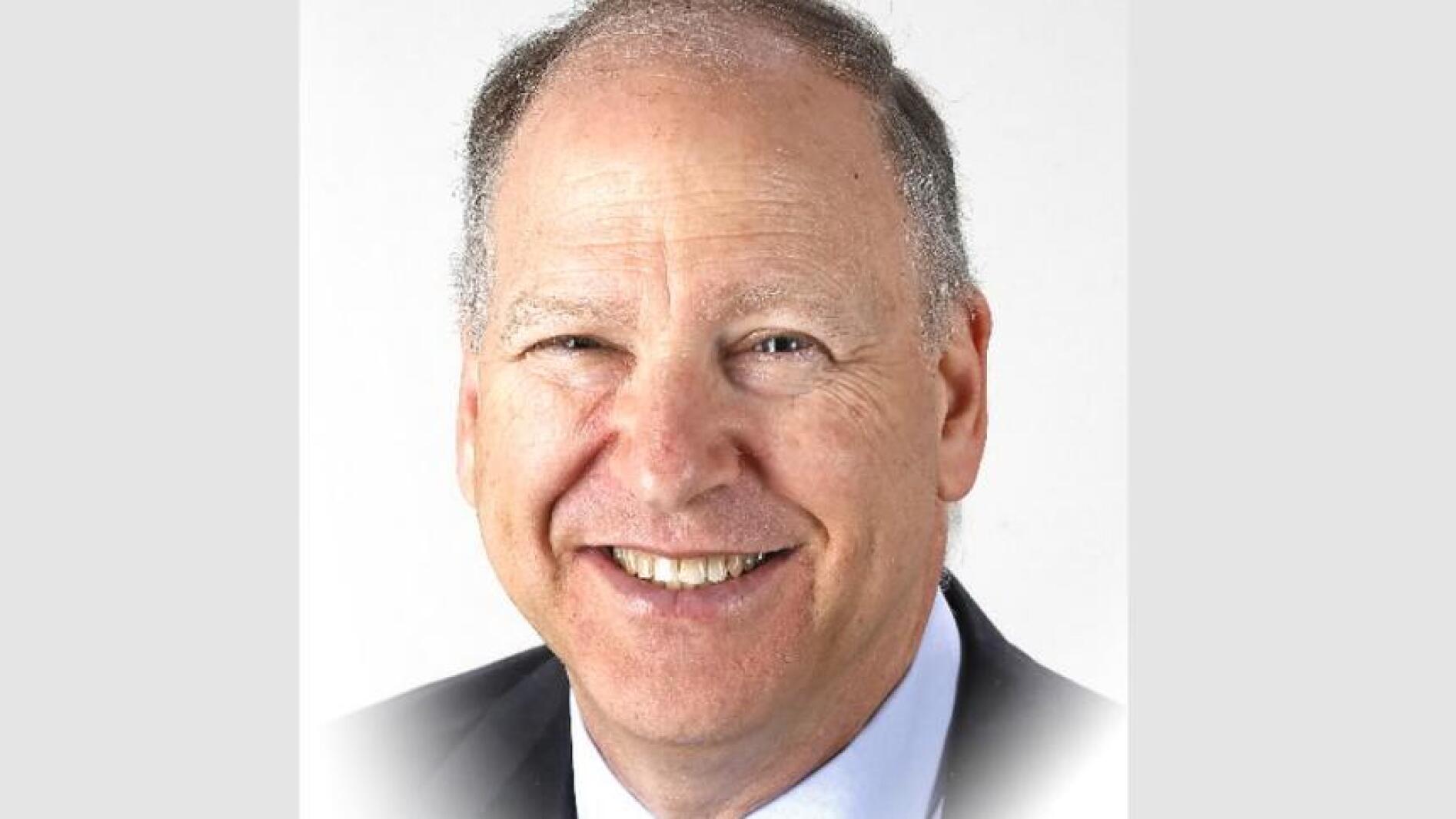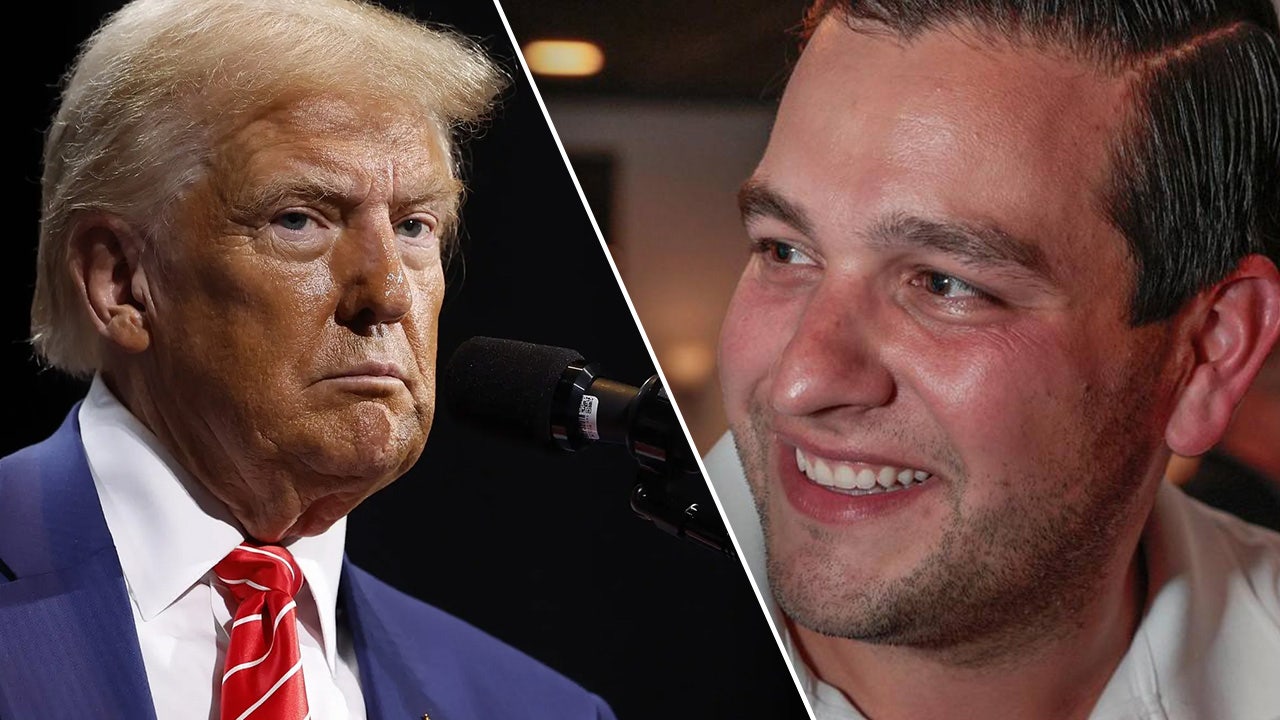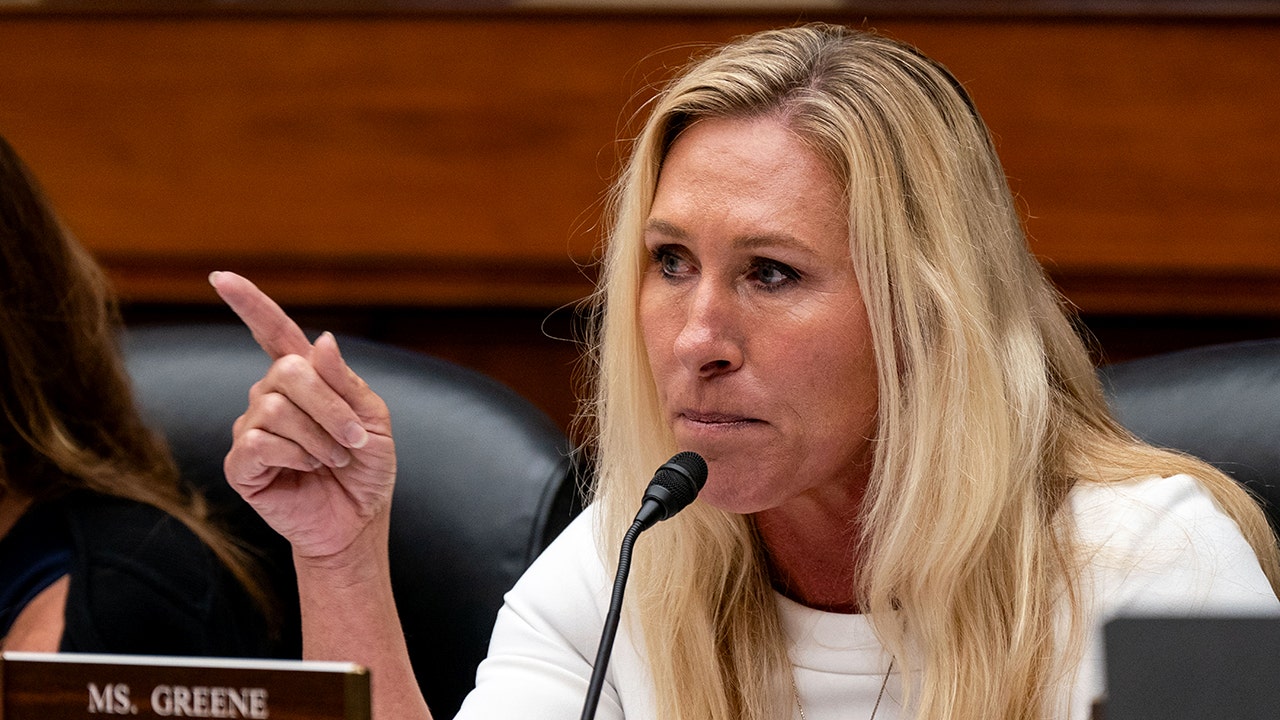North Dakota
Presidential candidate Doug Burgum takes credit for North Dakota term limits. Is that accurate?

FARGO — On the presidential campaign trail, Doug Burgum has touted achievements during his tenure as North Dakota governor, like tax cuts and balanced budgets.
But when he takes credit for the state enacting term limits for the governor and state legislators this year, it leaves some of the policy’s biggest supporters scratching their heads.
Burgum pointed to term limits as one of his achievements in his campaign announcement speech on June 7 and has used them as a selling point in pamphlets distributed in Iowa as he spends millions to get his name out in TV ads and mailers in early primary states.
While Burgum has expressed support for term limits for years, it was North Dakota voters, not the governor, who approved the policy through a ballot measure in the 2022 election.
In North Dakota, petitioners who gather enough signatures in support of an issue can put a question directly to voters, bypassing the need for elected officials to enact new policies. It was through that process, not the governor and Legislature, that the state created term limits.
Many who backed the measure were part of a political group often in conflict with Burgum. Backers of the measure included former legislator and perennial statewide candidate Rick Becker, the founder of the right-wing Bastiat Caucus — a group of lawmakers that is often a thorn in the side of the state’s traditional conservative Republican establishment.
“He as a candidate is taking credit where actually the credit is deserved by others,” said Becker, a former Republican who ran against Burgum in 2016. “And in the case of term limits, deserved by not only the people that were behind it but by the voters of North Dakota.”
Term limits are often championed by populists as a way to challenge the status quo by getting career politicians out of office, and Becker said he believes Burgum is trying to tie his name to an issue that will resonate with GOP primary voters.
Interestingly, Burgum’s support for term limits is a point of departure between him and the more traditional Republicans he tends to align with more closely.
Many longtime lawmakers in the North Dakota Legislature, including former House Majority Leader Chet Pollert, R-Carrington, and former Senate Majority Leader Rich Wardner, R-Dickinson, opposed term limits.
The state’s Republican Party did not take an official stance on the measure, though former party chairman Perrie Schafer told Forum News Service the measure was a bad idea. The Democratic-NPL also opposed term limits.
Meanwhile, much of the support for the 2022 term limits ballot measure came from ultra-conservative lawmakers. including former Rep. Becker and then Rep. and now Sen. Jeff Magrum, R-Hazelton.
Burgum in September 2022 told The Forum he supported the term limits, but when asked why Burgum supported the term limits ballot measure, a spokesman did not respond. Burgum did not campaign for term limits in 2022 and expressed his support in a statement after The Forum inquired about his stance.
“While most statewide offices aren’t included in the measure, it’s a good first step and we support it and encourage North Dakotans to give it their full consideration,” Burgum told The Forum in a statement last September.
Since Burgum didn’t come out in direct support, he can’t truly take any credit, Magrum said.
“We liked it that he didn’t oppose it, but he never did necessarily support the measure directly,” Magrum said. “I think he knew politically it was the right move.”
Though it’s worth noting Burgum had backed the idea for years — as a candidate for governor in 2016, he positioned himself as an anti-career politician with his support for the policy.
In a 2016 advertisement, he called for term limits “to break up the good ol’ boy network, because politicians are too cozy with lobbyists and special interests,” Forum News Service reported at the time.
Despite his stated support for the measure, Burgum, who’s made major political donations to unseat lawmakers who impede his policy goals, did not provide any financial backing for term limits.
Burgum’s political committee Dakota Leadership PAC did not contribute to the ballot measure campaign. However, Burgum had used the same committee to spend more than $1.2 million to influence North Dakota legislative races.
Term limits, which went into effect in January, won’t immediately apply to Burgum, who under the new rules can seek a third term in office if he chooses.
The governor, state senators and state representatives are now limited to eight years in office. Members of the Legislature can serve eight years in each the House and Senate. Limits do not apply to other statewide offices like secretary of state and attorney general.
So far it’s been unclear what Burgum’s plans are if he drops out of the presidential race. If he ran for governor again, the election would be in 2024.
Burgum officially announced his intent to run for president in early June and has been working on getting the national name recognition and donor base he’ll need to compete with longer-established GOP candidates with higher profiles.

North Dakota
Sports Spotlight: Ben DeForest
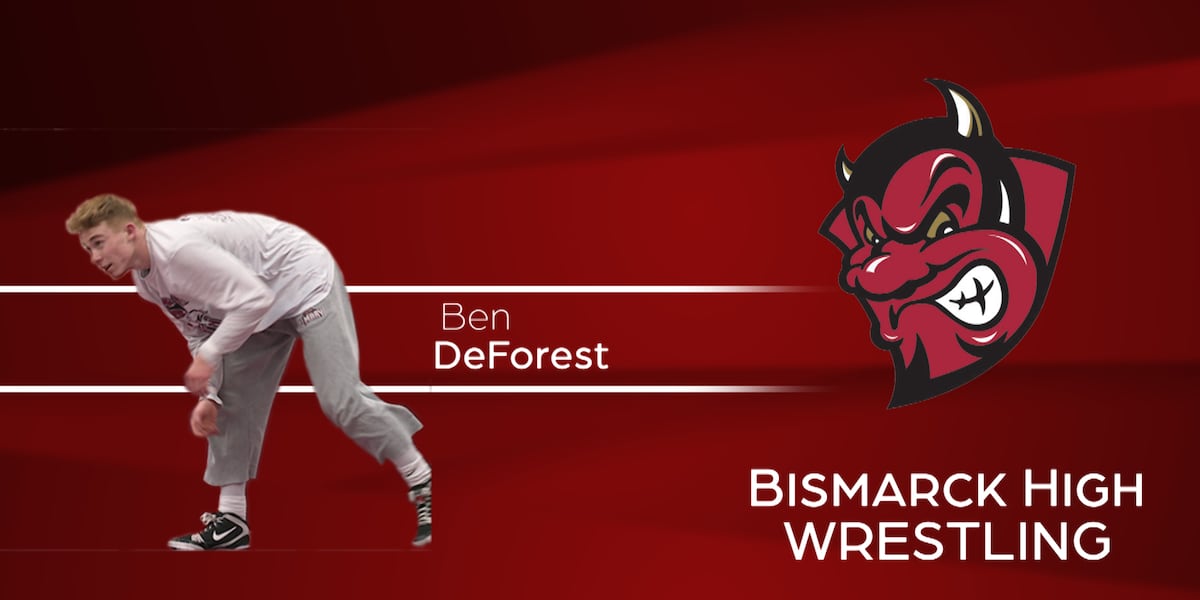
BISMARCK, N.D. (KFYR) – Bismarck High Wrestlers win a lot of titles.
“We’re striving for a state championship, that’s where the bar is set,” said Bismarck High Wrestling head coach Mark Lardy.
Three of said titles belong to the top-ranked 133-pound wrestler in North Dakota, Ben DeForest.
Now, Ben’s going for number four.
“It would mean everything to me,” said Ben DeForest. “There have been some great wrestlers from BHS that have been four-timers it would just mean a lot for me to add my name to that list.”
”He led a lot by example in the past,” said Lardy. “Now he leads not only by example but his voice in the room is heard.“
Even when his BHS days are over, Ben has another chapter to write in his story: He’s committed to Wrestle at UMary.
“We pride ourselves on trying to keep and retain as many local North Dakota kids here at U-Mary and we’re just very thankful that Ben chose to come here and wrestle for us as well,” said U-Mary Wrestling head coach Adam Aho.
The state champ has a bigger goal in mind.
“His goal is way beyond what our room is going to give him. This is just a stepping stone,” said Lardy.
Ben wants a national championship.
“We need every guy to have that type of mentality,” said Aho. “Without it, we will never be relevant on the national scene.”
”Once you get your hand raised you realize, all those morning practices you didn’t want to go to and all those lifts that you were like, uh I don’t know, it’s worth it. It’s worth it,” said DeForest.
Copyright 2024 KFYR. All rights reserved.
North Dakota
My Heartfelt Christmas Wish To You North Dakota

My Heartfelt Christmas Wish To You North Dakota.
Not a “catchy-clicky” title and I doubt many of my listeners or readers will probably even read this article.
However, I wanted to share something with you that is on my heart. This is so not me, as I’m more the guy who writes about “North Dakota’s 10 most quirky this and that”.
It’s not that I’m not a sensitive guy, because when I was growing up, I was probably too sensitive. I would avoid sad movies, songs, or anything that would spark too much of an emotion.
Yes, you could say my heart has become a bit jaded and cold over the years. It’s not something I’m proud of but more of a defense mechanism.
2024 has probably been one of the most challenging years for my family.
From losing loved ones to family issues to health issues to very challenging financial times, it’s been one of those years where you just can’t catch a break. I’m sure many of you can relate.
As we were attending a Christmas Eve candlelight service last night a young child caught my eye.
She was a cute little toddler who was starting to act up. Something I remember oh so well at church with my little now 20-year-old son.
As her father took her outside the sanctuary to attend to her, I couldn’t help but notice this child’s extremely unfair situation. She had a disability at a year or so old, that none of us could ever imagine. It broke my heart.
This poor child and her family no doubt have a long road ahead of them. As we lit our candles later in the service, I caught the wonder in her eyes, and it couldn’t help but melt my cold heart at the time.
She was perfect and I found myself saying a prayer for this little blonde girl with curly locks and her family.
Her situation also reminded me that I should be thankful for what I have and not what I don’t this Christmas. This is my Christmas wish for you North Dakota, that you will realize the same thing.
Be thankful for who you have around the tree today, not what’s under it.
Merry Christmas to all my listeners and readers. I hope at least a few of you get to read this and it will touch you the same way this little girl touched me on Christmas Eve.
LOOK: Popular Dinners Americans Don’t Make as Often Anymore
From classic casseroles to heaping helpings of beige-on-beige, these beloved American dinner dishes have fallen out of the mealtime rotation.
Gallery Credit: Stephen Lenz
The 11 Best Gooey Caramel Rolls You Will Find In North Dakota
North Dakota
Could a Bismarck woman become North Dakota's 1st saint?

BISMARCK — Christmas Day marks the ninth anniversary of 31-year-old Michelle Duppong’s death. While her family and friends will feel her absence on this day, they also feel the love, kindness and faith she demonstrated during her short life, along with abundant hope that she not only shared while alive but continues to share in death, which is one of the reasons she is slated to become the first person from North Dakota to become a Catholic saint.
Contributed
In June 2022, Bismarck Bishop David D. Kagan announced the opening of a diocesan investigation into Duppong’s “holiness of life and love for God,” officially starting the long and arduous process of canonization to a saint. On Nov. 1, 2022, Kagan deemed Duppong a servant of god.
Duppong is on track to be the first North Dakotan and one of few around the world to be canonized, said Father Tom Grafsgaard, of Hazen, North Dakota. According to Catholic publications, only 11 people from the U.S. have become canonized saints.
“It’s never happened in the history of North Dakota in either (the Bismarck or Fargo) Diocese,” Grafsgaard said. “It’s quite exceedingly rare for this to be happening.”
In the process of canonization, the Catholic Church declares people “saints.” There are three paths to sainthood: to have died as a martyr for Catholicism; if one lived an expression of love and died a rather quick and unexpected death; or if they gave a heroic example of living all the Christian virtues.
The process of canonization is governed by a strict canonical or juridical procedure established by St. John Paul II in 1983.
After Kagan began the process, Duppong’s cause entered the diocesan phase of investigation into her life. The Michelle Duppong Guild was created — a group tasked with promoting an awareness of her life. Officials are poring over Duppong’s writings, work, demonstrations of faith and the great number of lives she touched while alive, which are illustrated through interviews with those who knew her, Grafsgaard said.
Her case will be built up and eventually sent to the Dicastery for the Causes of the Saints in Rome for the Roman Phase of canonization. A Vatican panel will also investigate and determine if Duppong lived a heroically virtuous life. The Dicastery can then issue a “decree of heroic virtue” in which Duppong would be given the new title of “Venerable Servant of God.”
The third step, beatification, then begins. During this phase, it must be proven that one miracle has been granted by God through Duppong’s intercession. If the Pope declares a true miracle occurred, then Duppong would be declared “Blessed.” Last, a ceremony of canonization would take place where the church declares her a Saint in heaven with God.
“The process is very long,” Grafsgaard said. “I often say, ‘It takes as long as it takes.’ ”

Contributed by michelleduppong.org
Michelle Christine Duppong was born Jan. 25, 1984, the fourth of six children to parents Ken and Mary Ann Duppong. She grew up on the family farm in Haymarsh, North Dakota, where her parents said she loved to help with chores, including caring for sheep but especially gardening, mowing, pruning, weeding, harvesting and canning, according to her mother.
Duppong was named valedictorian and president of her senior class and later attended North Dakota State University, where she earned a degree in horticulture.
After earning her degree, she became a FOCUS missionary at four college campuses, including the inaugural year at the University of Mary, mentoring college students to draw them deeper into the faith. FOCUS is an apostolate dedicated to evangelizing college and university students.
In 2012, she became the director of faith formation for the Bismarck Diocese, where she led parish missions, launched a podcast and spearheaded a three-day Eucharistic conference that drew thousands to the Bismarck Civic Center in 2013.
In the fall of 2014, Duppong was experiencing sharp abdominal pains that doctors initially thought were ovarian cysts, a common but painful issue for women that will sometimes dissolve and go away without major medical treatment. But by December, the pain was unrelenting, and an outpatient surgery was scheduled that month to remove the cysts.
According to Mary Ann Duppong, surgeons were “shocked to find” Michelle Duppong’s abdomen was “full of stage four cancer.”
Doctors expected the young woman to die within months, and hospice care was recommended.
“Michelle was not one to blame anyone for anything,” Mary Ann Duppong said. “Her attitude was, ‘If God wants me to go through this, I will go through this.’ “
Despite the diagnosis, Michelle Duppong continued her life for nearly a full year.
According to the website that outlines the canonization process for Michelle Duppong and its status, she told one of the sisters providing hospice care that she believed she would pass on Christmas Day. Michelle Duppong died at 11:23 p.m. on Dec. 25, 2015.
Shortly after Bishop Kagan initiated the process for Michelle Duppong’s canonization, U.S. bishops affirmed their support for the cause’s advancement.
In this first stage, the primary focus is to raise awareness of Michelle Duppong and the push for her sainthood by spreading as much information about her and her life as possible, which is done through the creation of a guild and much of which can be found at
www.michelleduppongcause.org.
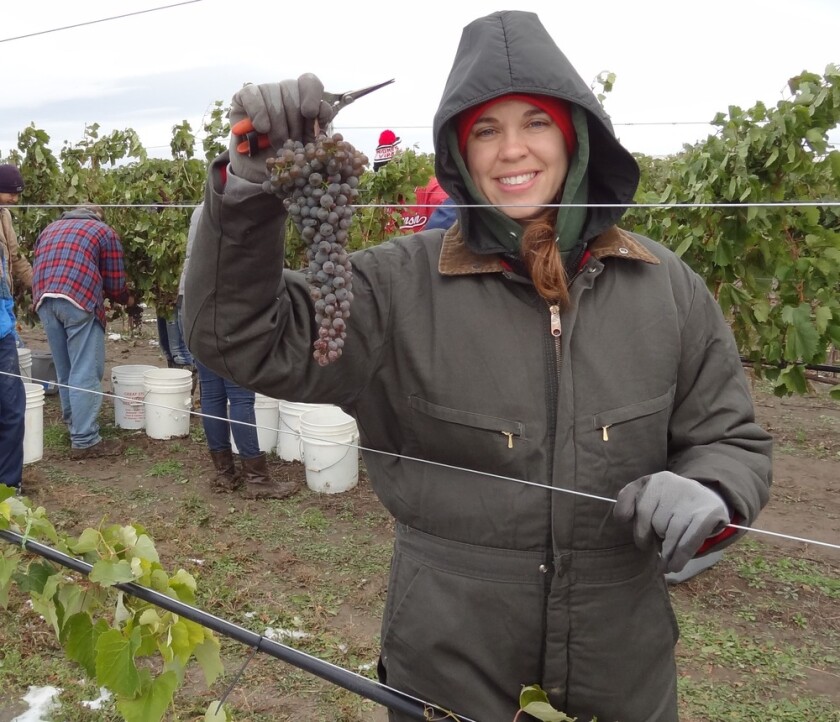
Contributed.
In January, a FOCUS-produced documentary titled “Thirst for Souls: The Michelle Duppong Story,” was screened at a FOCUS convention in St. Louis. Afterward, Michelle Duppong’s parents were inundated for hours with comments about how much the movie and Michelle had influenced viewers.
While one cannot necessarily predict when or if Michelle Duppong will become a saint, Grafsgaard said a bishop must believe canonization is likely to begin the process.
“For a bishop to initiate a cause, there should be a well-founded hope for its success,” he said. “There certainly was reputation in her life, and she continues to have it in her death.”
-
/cdn.vox-cdn.com/uploads/chorus_asset/file/24924653/236780_Google_AntiTrust_Trial_Custom_Art_CVirginia__0003_1.png)
/cdn.vox-cdn.com/uploads/chorus_asset/file/24924653/236780_Google_AntiTrust_Trial_Custom_Art_CVirginia__0003_1.png) Technology5 days ago
Technology5 days agoGoogle’s counteroffer to the government trying to break it up is unbundling Android apps
-

 News6 days ago
News6 days agoNovo Nordisk shares tumble as weight-loss drug trial data disappoints
-

 Politics6 days ago
Politics6 days agoIllegal immigrant sexually abused child in the U.S. after being removed from the country five times
-

 Entertainment7 days ago
Entertainment7 days ago'It's a little holiday gift': Inside the Weeknd's free Santa Monica show for his biggest fans
-

 Lifestyle6 days ago
Lifestyle6 days agoThink you can't dance? Get up and try these tips in our comic. We dare you!
-

 Technology1 week ago
Technology1 week agoFox News AI Newsletter: OpenAI responds to Elon Musk's lawsuit
-
/cdn.vox-cdn.com/uploads/chorus_asset/file/25672934/Metaphor_Key_Art_Horizontal.png)
/cdn.vox-cdn.com/uploads/chorus_asset/file/25672934/Metaphor_Key_Art_Horizontal.png) Technology1 day ago
Technology1 day agoThere’s a reason Metaphor: ReFantanzio’s battle music sounds as cool as it does
-

 News3 days ago
News3 days agoFrance’s new premier selects Eric Lombard as finance minister


